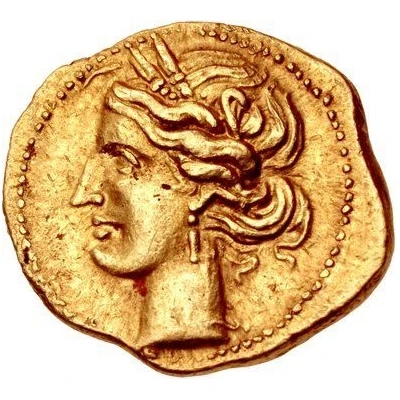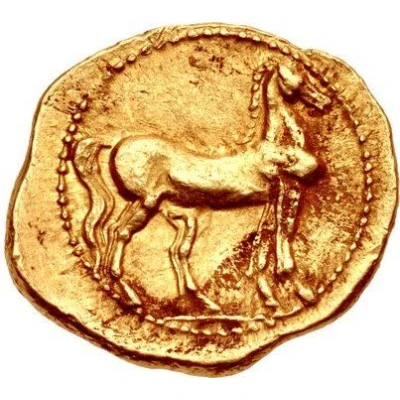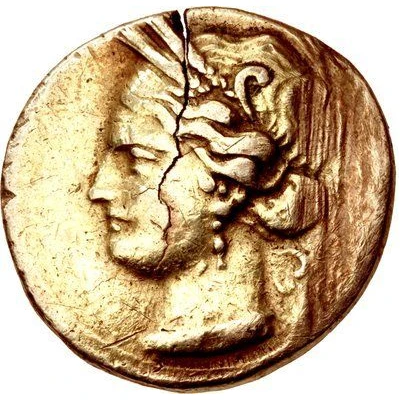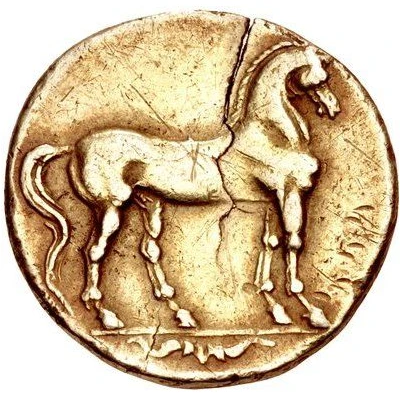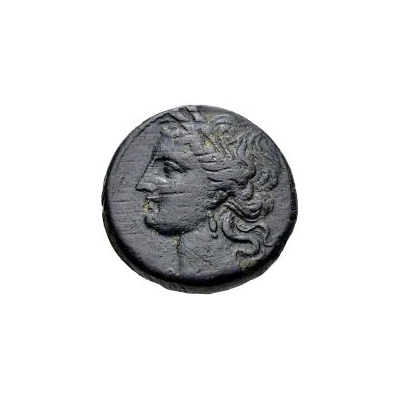
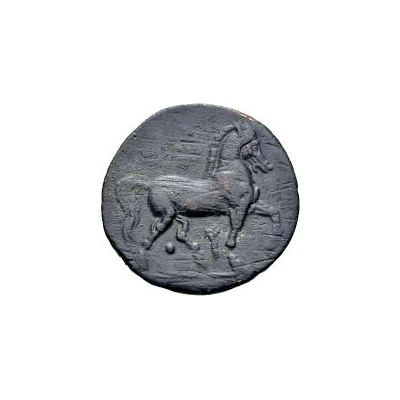

Obverse © Classical Numismatic Group, Inc. – Reverse © CGB
Æ Trishekel 201 BC - 175 BC
| Bronze | 18 g | 28 mm |
| Issuer | Carthage (Zeugitana) |
|---|---|
| Type | Standard circulation coin |
| Years | 201 BC - 175 BC |
| Value | Trishekel (3) |
| Currency | Shekel |
| Composition | Bronze |
| Weight | 18 g |
| Diameter | 28 mm |
| Thickness | 3 mm |
| Shape | Round (irregular) |
| Technique | Hammered |
| Orientation | Medal alignment ↑↑ |
| Demonetized | Yes |
| Updated | 2024-10-09 |
| Numista | N#194710 |
|---|---|
| Rarity index | 91% |
Reverse
Horse trotting right with Punic legend below.
Lettering: ALEF
Edge
Plain
Comment
For this type, Jacques Alexandropoulos has listed twenty-one varieties.Rated R1.
Interesting fact
The Æ Trishekel coin was used as a form of currency in the ancient city of Carthage, which was located in present-day Tunisia. The coin's design features a stylized image of a horse's head, which was a symbol of strength and power in ancient Carthage. The coin was also adorned with intricate patterns and symbols, which were meant to represent the city's wealth and prosperity. Despite being made of bronze, the Æ Trishekel coin was considered a valuable form of currency in its time, and it remains a sought-after collector's item among numismatists today.
